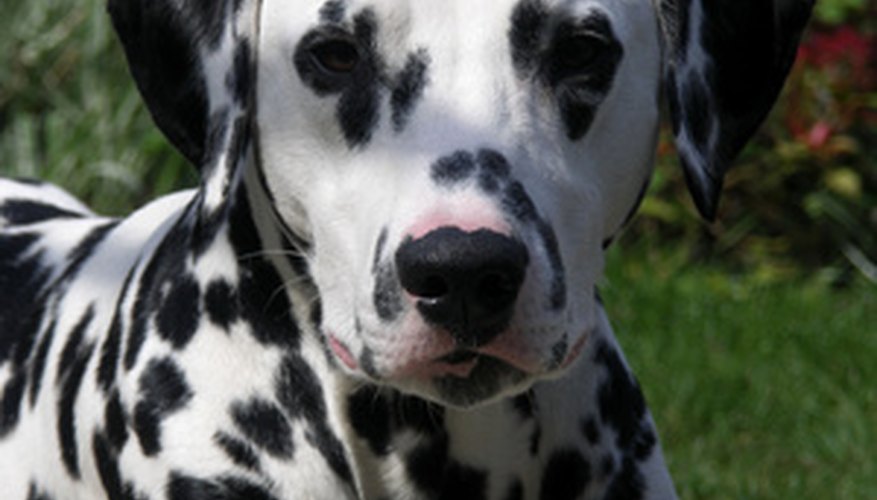Dalmatians are one of the most sensitive breeds to allergies. Allergic reactions cause pink or red hives to cover their backs. Skin irritations may result from pollens, food allergies, stress and heat.
Environmental Factors
The Dalmatian may inhale allergies such as pollen and moulds, causing a histamine reaction in the body. Other environmental factors are temperature and humidity fluctuations, skin dryness from whitening shampoos and frequent bathing, and blocked skin pores from grooming products. Fleabite dermatitis results from the constant biting and licking of the flea-infested area. Some Dalmatians are even allergic to flea saliva. Use a pesticide-free flea mist during the summer to keep the coat free of these irritants.
- The Dalmatian may inhale allergies such as pollen and moulds, causing a histamine reaction in the body.
- Use a pesticide-free flea mist during the summer to keep the coat free of these irritants.
Food Allergies
Dog food containing lamb, turkey or chicken reduces the severity of food related rashes. Due to the dalmatian's sensitive stomach, changing dog food needs to be a gradual process. Over a span of 10 to 14 days, combine the two foods while slowly increasing the new food and decreasing the old food.
Stress
Stress increases the body's production of glucocorticoids, a steroid hormone. Glucocorticoids have a negative effect on the dalmatian's body by reducing the skin's natural barrier function. The skin can no longer resist bacteria and environmental allergens, thus causing infection and hives.
Dal Crud
Dal crud is the skin reaction to an allergic exposure. Inflamed hair follicles and hives along the dalmatian's head and back cause severe itchiness and ooze serum. The serum dries, forming a scab. It stains the surrounding hair, causing a bronzing of the coat. The hair from the infected follicle sheds, resulting in a patchy coat. A secondary infection called Staphyloccus intermedius may also occur in the inflamed follicles.
- Dal crud is the skin reaction to an allergic exposure.
- The hair from the infected follicle sheds, resulting in a patchy coat.
Preventive Measures
Veterinarians may prescribe a fatty acid supplement to increase the dog's skin barrier strength. Fatty acids are anti-inflammatory and promote hair growth. Antihistamines and fatty acids work together to decrease the severity of dal crud. Use hypoallergenic and antibacterial shampoos and do not bathe frequently.
- Veterinarians may prescribe a fatty acid supplement to increase the dog's skin barrier strength.
- Antihistamines and fatty acids work together to decrease the severity of dal crud.
Treatment
Clean the skin with a benzoyl peroxide shampoo to remove the bacteria attacking the follicles. Weekly bathing may be necessary during a severe bout of dal crud. Alleviate dryness by using a hypoallergenic oatmeal cream rinse after each bath. Antibiotics may be prescribed for folliculitis and Staphylococcus intermedius treatment.
- Clean the skin with a benzoyl peroxide shampoo to remove the bacteria attacking the follicles.
- Alleviate dryness by using a hypoallergenic oatmeal cream rinse after each bath.
